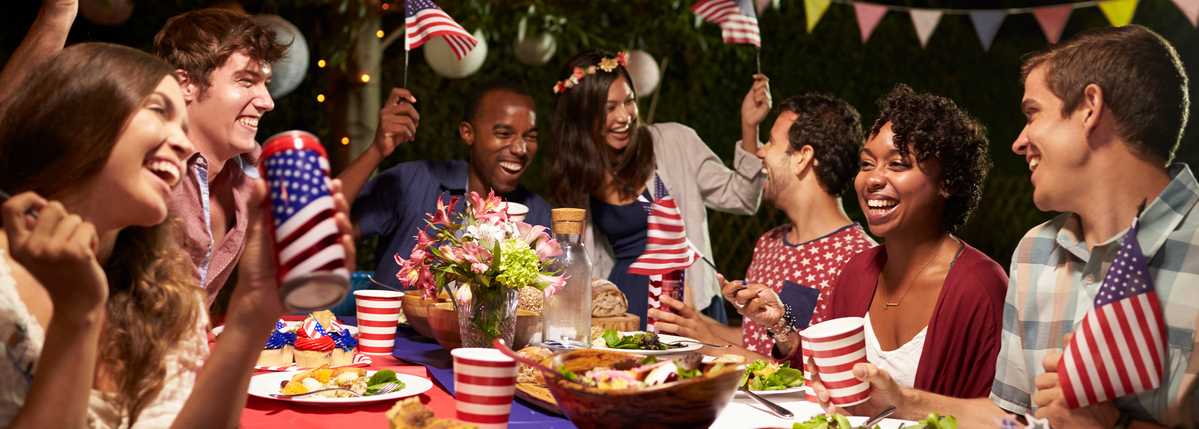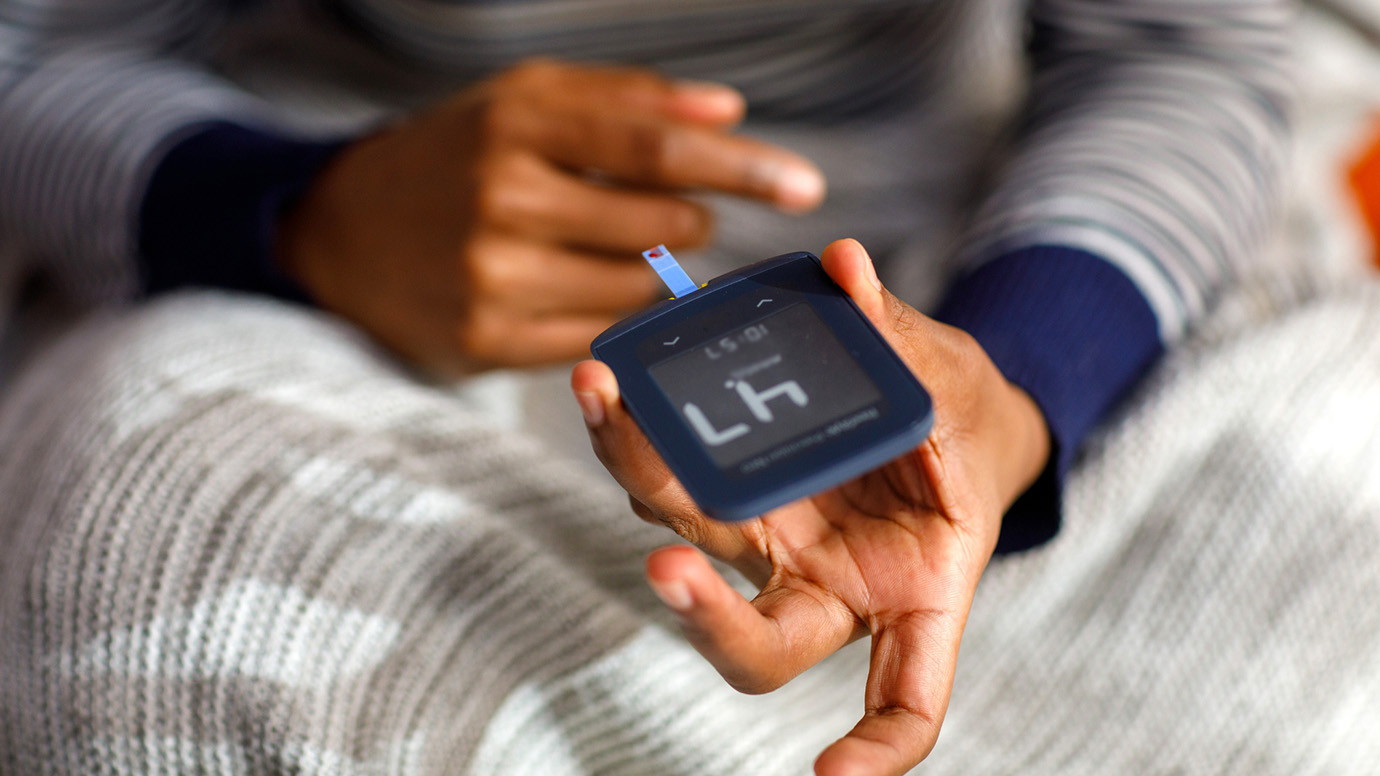Don’t Let Low Blood Sugar Ruin Your Vacation!
Written by: Julia Flaherty
8 minute read
April 19, 2022
Here are 8 tips for preventing and addressing severe low blood sugar levels while on vacation as a person with type 2 diabetes.
As a person with type 2 diabetes, experiencing severe low blood sugar levels is scary whether you are close to home or far away from it!
People with type 2 diabetes can experience severe low blood sugars at any time. Most commonly, you may experience severe low blood sugar levels while managing type 2 diabetes if you skip meals, aren’t eating enough carbohydrates, consume alcohol or are sick.
When you are outside of your normal routines, the possibility of a severe low blood sugar events is higher! In this article, we share our tips for preventing and treating severe low blood sugar levels while you are on vacation so you can spend more time enjoying yourself and less time worrying.
1. Have a pre-trip visit with your healthcare team.
Pre-trip appointments can help you feel more secure and confident in managing your type 2 diabetes away from home, especially if you are going abroad! It’s normal to be anxious when you aren’t in close proximity to your doctor and pharmacy and are outside of your normal day-to-day diabetes management routine.
During your visit, you can work with your healthcare team to create a low blood sugar preparation checklist. Initiate this conversation with them so you can enjoy your trip and feel secure when you’re away. If you use an insulin pump to manage your type 2 diabetes, your doctor may adjust your basal rate for your vacation, accounting for hormone fluctuations, altitude changes and other factors that could impact your blood sugar levels.
If it’s not possible to see your doctor in-person ahead of your trip, try scheduling a phone call or televisit with your doctor, or ask them for tips via your healthcare messaging portal.
Together, you can talk through a diabetes management plan that will work for you while you’re away.
2. Talk to your doctor about glucagon.
Hard candies and juice don’t always do the trick, especially if you are unconscious and unable to manage a severe low blood sugar on your own. Glucagon can save your life! A severe low blood sugar is any blood sugar level at or below 55 mg/dL (3.1 mmol/L).
If you haven’t already talked to your doctor about getting glucagon, bring it up during a pre-trip checkup. Glucagon is used in emergencies to treat hypoglycemia (low blood sugar levels) when a person with diabetes cannot manage it themselves. Glucagon works by releasing the body’s glucose reserves from the liver to raise blood sugar levels, unlike insulin, which lowers blood sugar levels. Glucagon can be stored at room temperature (so it will be safe in your carry-on) and comes in nasal, pen, vial and syringe forms.
Don’t store glucagon or other low blood sugar snacks in your checked bag. In an emergency, they won’t be helpful if they are packed away. Your insurance may cover different styles of glucagon. If you do not have insurance or lack coverage for glucagon, various copay cards and patient assistance programs are available.
3. Consider investing in a continuous glucose monitor (CGM).
If you’re tired of using a blood glucose meter (BGM) to test your blood sugar levels and manage your type 2 diabetes, it may be worth talking to your doctor about getting a CGM ahead of your trip. A CGM is a small wearable device that tracks your blood sugar levels in real-time.
CGMs can help you be less hands-on with your diabetes management and achieve more stable blood sugar levels throughout the day. CGMs can tell you when your blood sugar levels are rising or falling so that you can prevent low blood sugar levels from continuing to drop. You may need to start the CGM conversation with your healthcare team a few months ahead of your vacation to ensure you get insurance approval and all of your supplies delivered on time.
By starting the process early, you will also give yourself more time to learn about your CGM and ask questions.
Different CGM technology has different features and settings to accommodate different type 2 diabetes (T2D) needs and preferences. You may find that your insurance only covers one or a few types of CGMs. To find out what’s best for you and what you’re eligible for, call your healthcare team. They should be able to walk you through it on an individual basis or refer you to an endocrinologist who can help.
CGMs might not be right for everyone, but for many people with type 2 diabetes they are helpful.
4. Pack airport-friendly low blood sugar snacks in your carry-on.
Ensuring you’re carrying Transportation Security Administration (TSA)-approved items in your carry-on can save you time at the airport(and get you to your destination faster). Use the TSA’s “What Can I Bring?” search engine to determine whether your favorite low blood sugar snacks are allowed in your carry-on.
Here are some of the most popular low blood sugar snacks that are TSA-approved:
- Chocolate (Solid)– Carry-On Bags ✅ Checked Bags ✅
- Cookies– Carry-On Bags ✅ Checked Bags ✅
- Dried Fruits– Carry-On Bags ✅ Checked Bags ✅
- Juice– Yes (Less than or equal to 3.4 oz/100ml allowed) ⚠️
Checked Bags ✅ - Honey– Yes (Less than or equal to 3.4 oz/100ml allowed) ⚠️
Checked Bags ✅ - Candy– Carry-On Bags ✅ Checked Bags ✅
To speed up the process, it’s a good idea to pack your food items in a sealed plastic bag or something similar in the case that you are asked to remove them from your luggage during a screening. TSA officers have the final say as to whether particular food or beverages are allowed. Having low blood sugar snacks on hand can help you prevent your blood sugar from dropping into the severe range!
If you need more clarification about what is allowed, check out the TSA’s FAQs page.
5. Do pre-trip research to pinpoint the nearest pharmacies, hospitals and grocery stores.
So much as you want to avoid having to run to the pharmacy, hospital or a grocery store while on vacation, things happen! Do some pre-trip research to find the pharmacies, hospitals and grocery stores close to where you are staying.
If you forget a medication, you can quickly ask your doctor to send your prescription to the nearest pharmacy by locating it ahead of time.
Identifying these key points should give you peace of mind for managing type 2 diabetes away from home. And, if you have severe low blood sugar you can’t treat on your own, it’s good to let your family members know where you might possibly be taken for medical services.
A little extra security never hurt!
6. Pack your health insurance, FSA, HSA, or copay cards.
If you are traveling within the U.S., be sure you add your health insurance, FSA, HSA, or copay cards to your carry-on, purse or wallet. This can help you avoid having to submit claims later or having to put your vacation budget towards unprecedented medical expenses.
If possible, it’s also a good idea to download digital versions of these cards to your phone’s photo album.
Also, don’t forget to save your doctor’s contact information in your phone for emergency situations. For example, if you need to fill glucagon unexpectedly while on vacation or are hospitalized for a severe low blood sugar, having these cards on hand can help make your care more efficient and professionally-processed.
7. Invest in a medical ID or set it up on your phone.
There are many trendy wearable medical IDs out there. Wearing one could save your life during hypoglycemic (low blood sugar) emergencies, especially if you are surrounded by strangers while on vacation. If you don’t want to invest in a wearable medical ID, it may be as simple as setting up emergency medical ID alert access on your phone.
Many of today’s cellular devices have this feature. Check out your carrier’s FAQ page to see if your phone has this feature and set it up if so! (There are different instructions for Android and iPhone devices.)
8. Prepare for severe low blood sugars to prevent them, and have the best vacation ever!
We hope your next trip is the much-needed break you deserve! Preparing for your trip can help you spend less time actively thinking about diabetes while you’re away and more time enjoying whatever vacation is in store.
All of this preparation may feel overwhelming, but it can save you a lot of time and energy while you’re actually on vacation—maybe even your life in the case of severe low blood sugar levels!
Educational content related to type 2 diabetes is made possible with support from Lilly Diabetes. Beyond Type 2 maintains full editorial control of all content published on our platforms.

Author
Julia Flaherty
Julia Flaherty is a published children’s book author, writer and editor, award-winning digital marketer, content creator and type 1 diabetes advocate. Find Julia’s first book, “Rosie Becomes a Warrior.” Julia finds therapy in building connections within the diabetes community. Being able to contribute to its progress brings her joy. She loves connecting with the diabetes communities, being creative and storytelling. You will find Julia hiking, traveling, working on her next book, or diving into a new art project in her free time. Connect with Julia on LinkedIn or Twitter.
Related Resources

Managing type 2 diabetes means keeping your blood sugar levels within a healthy range and...
Read more

Physical activity plays a crucial role in managing diabetes, and walking is an easy, effective...
Read more

The biggest barbecue day of the year is the 4th of July! Celebrating the 4th...
Read more

